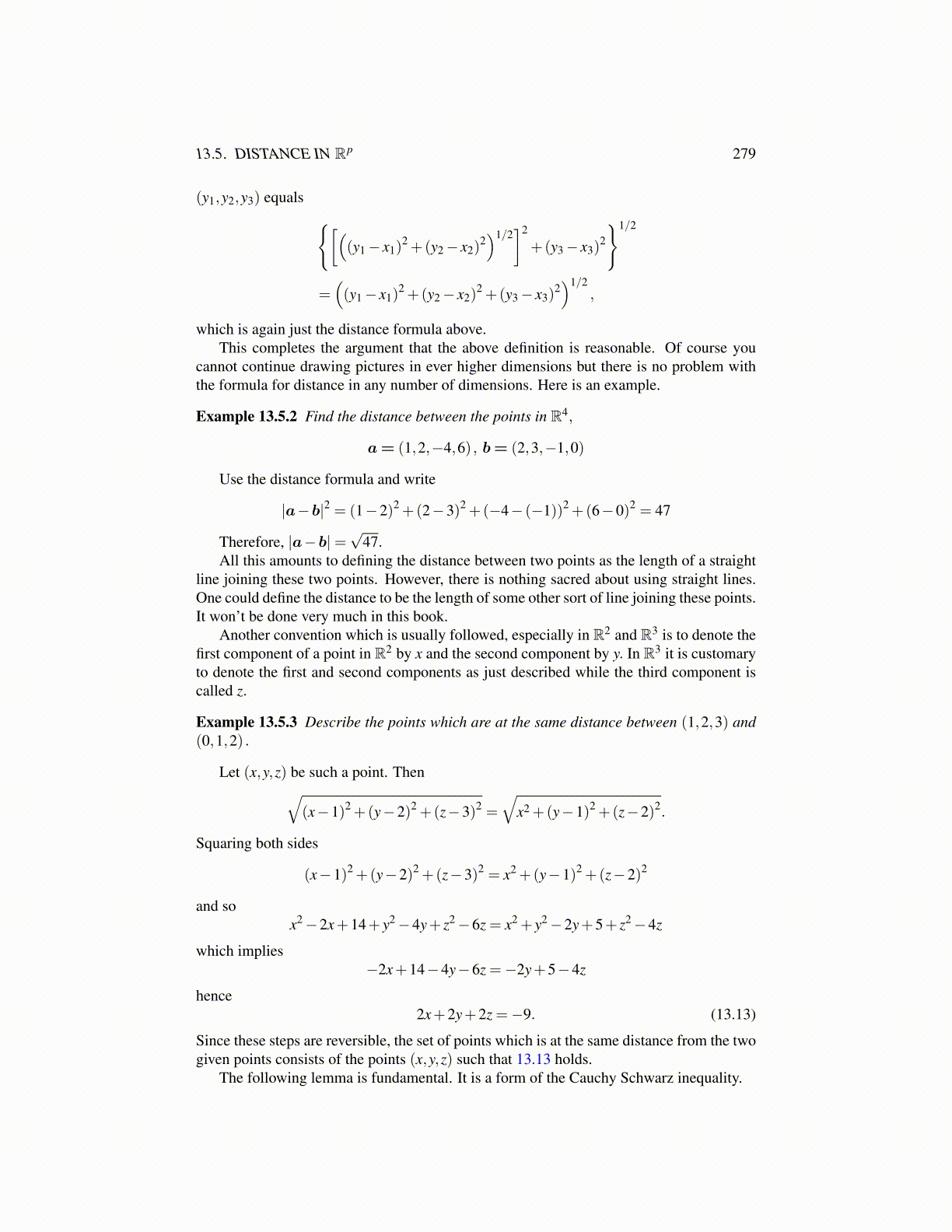
13.5. DISTANCE IN Rp 279
(y1,y2,y3) equals {[((y1 − x1)
2 +(y2 − x2)2)1/2
]2
+(y3 − x3)2
}1/2
=((y1 − x1)
2 +(y2 − x2)2 +(y3 − x3)
2)1/2
,
which is again just the distance formula above.This completes the argument that the above definition is reasonable. Of course you
cannot continue drawing pictures in ever higher dimensions but there is no problem withthe formula for distance in any number of dimensions. Here is an example.
Example 13.5.2 Find the distance between the points in R4,
a= (1,2,−4,6) , b= (2,3,−1,0)
Use the distance formula and write
|a−b|2 = (1−2)2 +(2−3)2 +(−4− (−1))2 +(6−0)2 = 47
Therefore, |a−b|=√
47.All this amounts to defining the distance between two points as the length of a straight
line joining these two points. However, there is nothing sacred about using straight lines.One could define the distance to be the length of some other sort of line joining these points.It won’t be done very much in this book.
Another convention which is usually followed, especially in R2 and R3 is to denote thefirst component of a point in R2 by x and the second component by y. In R3 it is customaryto denote the first and second components as just described while the third component iscalled z.
Example 13.5.3 Describe the points which are at the same distance between (1,2,3) and(0,1,2) .
Let (x,y,z) be such a point. Then√(x−1)2 +(y−2)2 +(z−3)2 =
√x2 +(y−1)2 +(z−2)2.
Squaring both sides
(x−1)2 +(y−2)2 +(z−3)2 = x2 +(y−1)2 +(z−2)2
and sox2 −2x+14+ y2 −4y+ z2 −6z = x2 + y2 −2y+5+ z2 −4z
which implies−2x+14−4y−6z =−2y+5−4z
hence2x+2y+2z =−9. (13.13)
Since these steps are reversible, the set of points which is at the same distance from the twogiven points consists of the points (x,y,z) such that 13.13 holds.
The following lemma is fundamental. It is a form of the Cauchy Schwarz inequality.